
Street style at Paris fashion week. Composite: Rex/Getty
Street-style stars, those fashion-forward folks papped outside shows, have arguably become as trend-setting as any model or celebrity. At one of this season’s most hyped shows, JW Anderson in London, for example, over 50 photographers swarmed outside the entrance looking for their photographic prey, making it hard for the more unremarkably dressed among us to reach the door. In the last five years, the scene has grown exponentially. The shot outside the show is now as influential – and valuable – as the one of the model on the catwalk.
But attending the shows in a photograph-worthy outfit does not a street-style star make. For that you need the black-clad photographers – now a familiar presence outside shows, snapping editors, influencers and insiders – willing to take the pictures that then get picked up off their Instagram feeds and used by the street-style stars themselves, often then becoming fodder for a slew of other fashionable feeds. But these images are often used without the photographers’ permission, and without a fee.
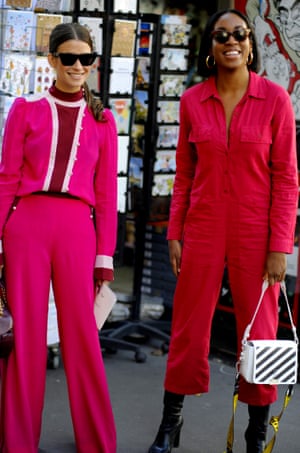
This fashion month, a group of about 40 photographers decided to draw attention to the issue, forming a union of sorts. During Milan fashion week, they launched the #NoFreePhotos campaign on social media. The campaign is aimed at influencers, bloggers and brands that, the photographers say, gain revenue through using their images without sharing the earnings. Influencers and bloggers are often paid by brands – or at least compensated with free flights or clothes – in exchange for social media posts of themselves in the outfits.
However, many of the photographers are freelance, with some taking pictures for no money at all. Katz Sindig is one such photographer. He says he spends anything between $8,000 and $15,000 in expenses in an average fashion month, travelling between New York, London, Milan and Paris. Both Sindig and Valentina Frugiuele, another photographer involved in #NoFreePhotos, declined to say how much they earn for a photograph. (Frugiulele did say: “I don’t even want to think about it.”) While each image could be sold for a relatively low fee, if that image is syndicated to different outlets over a season, it can, quite literally, be a money shot.
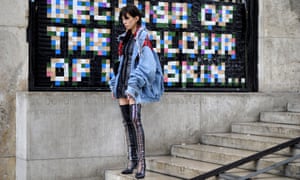
In striking contrast, the notoriety that comes with being a street-style star can bring serious bucks. In a recent article, Zanita Whittington, an ex-model and influencer who has more than 350,000 followers on Instagram, estimated that she could earn up to $100,000 (£75,000) in a typical New York fashion week if she said yes to every deal offered. With street style a “huge part” of her business, she knows how to play the game, maximising her visibility to gain the maximum amount of pictures. “The trick is to walk to the show,” she said. “That way you get more shots in.”
The photographers’ campaign, according to a campaign press release, will involve omitting the Instagram name of the person in the photo from posts, and not including a hashtag for the brand worn in the image. #NoFreePhotos photographers will also contact users of their work if it is used “without receiving the proper licence and securing compensation for the photographer”. If the issue is not addressed, they will reply to the image on social media with the #NoFreePhotos hashtag, effectively calling the user out. If necessary, they will seek legal advice.
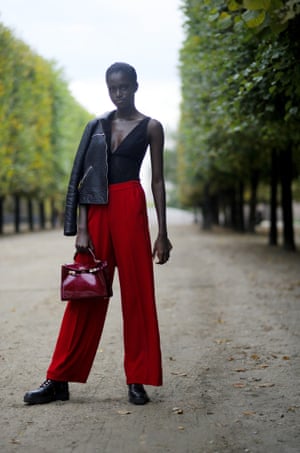
Sindig, who has the successful Le21eme website and 459,000 followers on Instagram, has been working in the industry for 10 years. For him: “The main thing is to raise awareness.” Frugiuele adds: “Instagram is not a free image bank. Our hard work should be acknowledged and respected.”
Of course, this is a two way relationship – these photographers wouldn’t have subjects to take pictures of were it not for those attending shows and dressing up, sometimes in several different outfits a day. It’s this argument that has dominated the response to #NoFreePhotos from bloggers and influencers. High profile blogger Bryan Boy says he doesn’t get paid to wear brands and that he always pays for his own travel at fashion week. He took to Instagram, commenting: “I obviously understand the photographers’ need to be compensated. But then again, when was the last time an influencer demanded a model release form from photographers who sell their images …?”
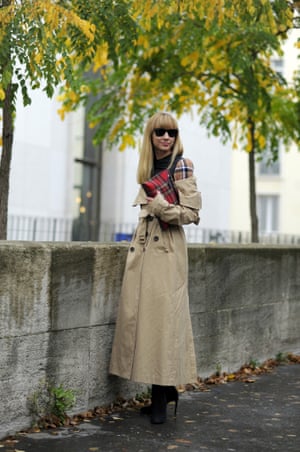
The street-style photographer scene has grown concurrently with the boom in influencers and bloggers in fashion over the past 10 years. Dressing like a street style star is now arguably as aspirational – and even slightly cooler – than dressing like a celebrity. There are currently guides on the internet on “how to wear an oversized blazer”, “how to do Scandi chic” and “how to wear safety orange”, all like a street-style star. Street-style trends to come out of the most recent round of shows include over-the-knee boots, trench coats, pin stripes and wide-legged trousers. Expect these trends to have more traction in stores this winter thanks to these images.
The growth of street style as a way to consume fashion is in line with our current cultural narrative – one that is obsessed with real talk, with authenticity, with #nofilter but can’t handle the cold-light-of-day truth. Street-style shots are reality, yes, but a structured version. They have the street backdrop, the “real” working woman as opposed to the model, the reportage shots, but, crucially, they’re curated. Each one is a collaboration between the person in the picture posing with her phone, crossing the street, digging her front row ticket out of her designer bag, and the photographer waiting for the perfect shot, catching her “unawares”. Like a Kylie Jenner selfie, look closely and you can see the joins.
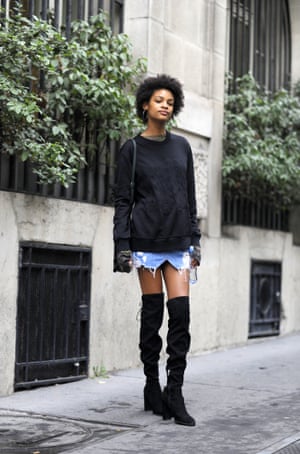
This is modern artifice, but the roots of street style can be traced back to reportage photographers ranging from Diane Arbus to Robert Doisneau, Nan Goldin to Bruce Davidson, taking pictures of interesting-looking passerbys, sometimes covertly. The street as shorthand for the real world – the formula these photographers are still working with – had a seminal moment with David Bailey. For his Young Idea Goes West shoot for Vogue in 1962, he photographed Jean Shrimpton in the designs of the day with a vibrant New York as the backdrop. With most fashion shoots taking place in the static environment of a photography studio, this was revolutionary. As our lives become more and more documented – through selfies and selfie-like pictures against a cityscape – it still feels very fresh.
The late 70s and early 80s saw a focus on youth culture around clubs with Maripoland Derek Ridgers taking images of cool looking people having a good time (Maripol’s Polaroids of people in the New York club scene are a highlight of the Barbican’s current Basquiat exhibition). Magazines such as i-D and the Face expanded on the idea, and made it more fashion-y, when they launched in 1980. The i-D “straight up” was a series with men and women photographed head-to-toe for their style alone. The likes of Boy George appeared in it.
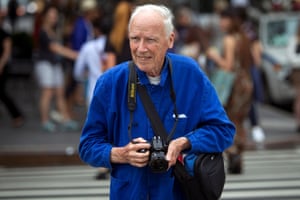
For a long time, street style at fashion shows meant Bill Cunningham, the New York Times photographer who died last year. He could be spotted in his blue jacket, on his bicycle, discreetly snapping outfits for a spread in the paper. He did this, in one way or another, from the late 70s till his death, taking pictures with an on-the-move vibrancy that the photographers today try to replicate. He became such a well-loved figure in the industry, that Anna Wintour quipped: “We all get dressed for Bill.”
In 2017, fashion insiders get dressed for the hordes of street-style photographers in his wake – a cohort that is developing into a bona fide industry. With the #NoFreePhotos campaign, it’s going pro, basically. According to Sindig, the key is redressing the imbalance of what is a symbiotic relationship. “It’s about mutual respect,” he says. “Most influencers say they don’t get paid and that shouldn’t be the case either … It does look bad when you’re [a street-style photographer] sharing an AirBnB with four or five guys and flying Ryanair, and they’re at the Ritz and in a Rolls-Royce. Clearly brands are throwing money around. It seems like it should be trickling down a little bit.”

